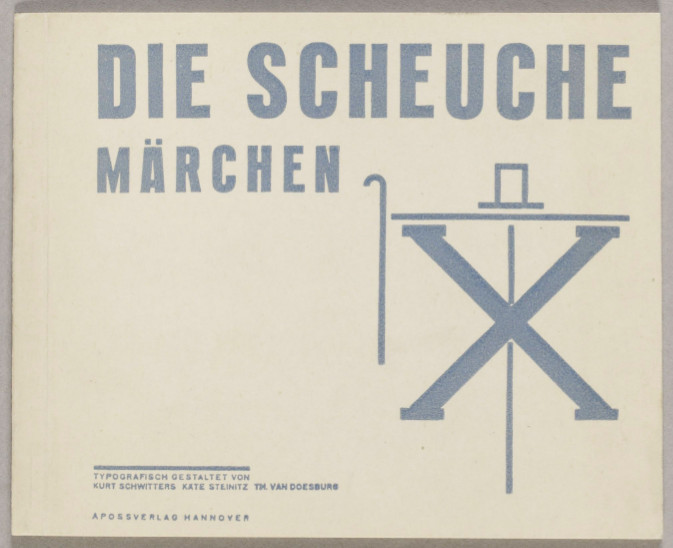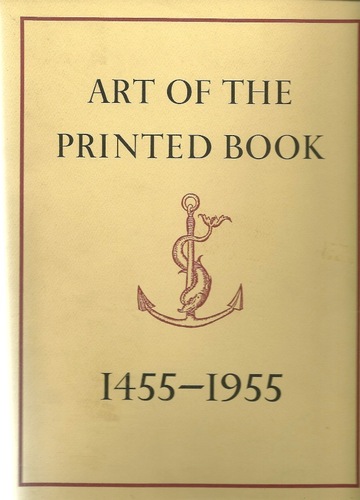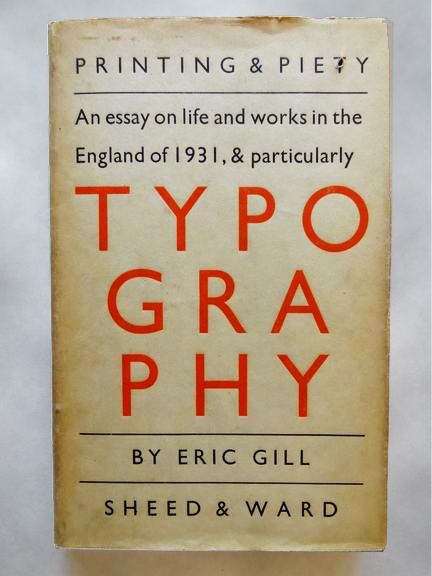Kurt Schwitters, Käte Steinitz, Theo van Doesburg: Die Scheuche: Märchen (1925–) [DE, EN, ES]
Filed under artist publishing, children's book | Tags: · dada, de stijl, graphic design, typography

“In Die Scheuche: Märchen [The Scarecrow: A Fairytale] phrasing borrowed from German fairytales, grammar lessons, and religious texts combine into a formal hybrid that is cast in type. For the creators of this children’s book, such serious play with ready-made genres and print components offered a means of collecting the fragments of the past and assembling them to rebuild for the future. The narrative itself thematizes this pursuit: “once upon a time” there was a scarecrow well-appointed in the accoutrements of bourgeoisie comfort, complete with frockcoat, lace scarf, and cane. He is mocked by fowl and beaten by the farmer who made him. A child then pries the cane from the farmer (who has stolen it from the scarecrow) and with a single blow dismantles the order of ownership. The story ends with the ghosts of the items’ erstwhile owners arriving to reclaim their effects.” (Source)
Publisher Apossverlag, Hannover, 1925
12 pages, 13 x 16 cm
via Kunsthaus Zurich
Commentary: Leslie Atzmon (Design Issues, 1996)
Die Scheuche: Märchen (German, 1925, 22 MB, updated on 2020-9-5)
The Scarecrow (English, trans. Jack Zipes, typogr. Barrie Tullet, 2009, partial view on Google Books)
El espantapajaros. Cuento (Spanish, 2012, added on 2017-10-3)
Art of the Printed Book, 1455-1955 (1973)
Filed under book | Tags: · book, graphic design, print, publishing, typography

This fully illustrated volume is a fine contribution to the history of books concerned with typography and bookmaking. Neither a printing manual nor a technical treatise, it was written by an accomplished designer and printer. It includes descriptions of the lives of the important printers, Gutenberg, de Tournes, Baskerville, Aldus, etc., and presents the historical backgrounds under which their folios were made.
Art of the Printed Book was written by Joseph Blumenthal, a practitioner whose Spiral Press set a long-acknowledged standard among fine printers. It is, in one sense, a personal selection, dependent on his aesthetic standards and, in another, a testament to the discrimination and collections of the Morgan Library. The 112 books selected and reproduced range from the Gutenberg Bible to the 20th-century works of Rogers, Gill, Updike, Meynell, and Mardersteig.
Art of the Printed Book, 1455-1955: Masterpieces of Typography Through Five Centuries From the Collections of the Pierpont Morgan Library, New York
With an essay by Joseph Blumenthal
Publisher Pierpont Morgan Library, New York, and David R. Godine, Boston, 1973
Second printing, 1974
125 full-page black-and-white illustrations
192 pages
PDF (45 MB, no OCR)
Comment (0)Eric Gill: An Essay on Typography, 2nd ed. (1931/1936)
Filed under book | Tags: · graphic design, typography

An Essay on Typography was first published in 1931, instantly recognized as a classic. It represents Gill at his best: opinionated, fustian, and consistently humane. It is his only major work on typography and remains indispensable for anyone interested in the art of letter forms and the presentation of graphic information.
This manifesto, however, is not only about letters — their form, fit, and function — but also about man’s role in an industrial society. As Gill wrote later, it was his chief object “to describe two worlds — that of industrialism and that of the human workman — and to define their limits.”
His thinking about type is still provocative. Here are the seeds of modern advertising: unjustified lines, tight word and letter spacing, ample leading. Here is vintage Gill, as polemical as he is practical, as much concerned about the soul of man as the work of man; as much obsessed by the ends as by the means. (David R. Godine)
Publisher Sheed and Ward, London, 1931
Second edition, 1936
133 pages
via Araucaria
Commentary (Mark Thomson, Eye Magazine, 2006)
Planned 2014 reprint (David R. Godine)
PDF (updated to an OCR’d version on 2014-6-2 via Marcell Mars)
Comment (0)
